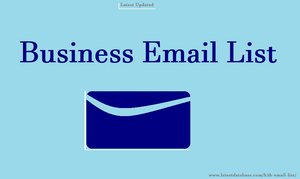Smartphones and tablets communicate application-optimized content to customers. Of course, users must first install the app on their smartphone. But if customers want to do this, they tend to prefer brands that offer a user-friendly mobile experience. Now, there are two apps here: Progressive Web Apps and Native Apps. This article will discuss the differences between progressive web apps and native apps, and which version is better from an SEO perspective.
Native applications must be developed for a specific business email list operating system. On the one hand, this means more development costs, but it's also technically sensible, since native apps can take full advantage of the OS. These applications use hardware such as cameras or sensors in the best possible way because they are optimized for that operating system. Other benefits of native apps Native apps can protect data on mobile devices (up to the limit of available storage).
With paid-for-native apps, the company's sales are increased through a suitable app store, and development costs are covered. Native apps are hosted in the vendor's store, so developers don't have to deal directly with distribution. After installation, the app icon is automatically displayed on the home screen. But it's not all good news for native apps. For example, different application versions must be developed, released, and maintained simultaneously for various operating systems.



